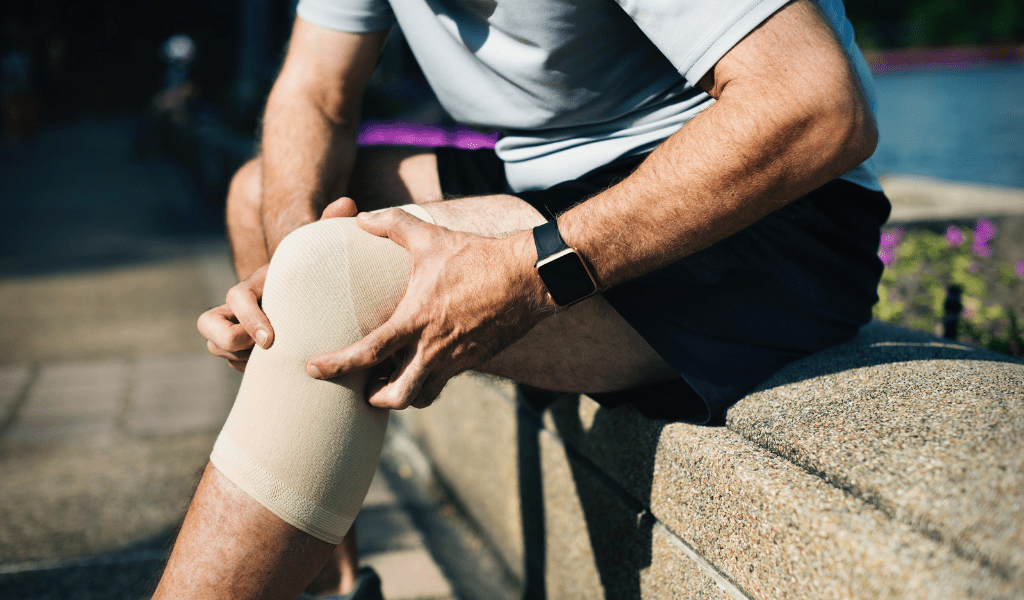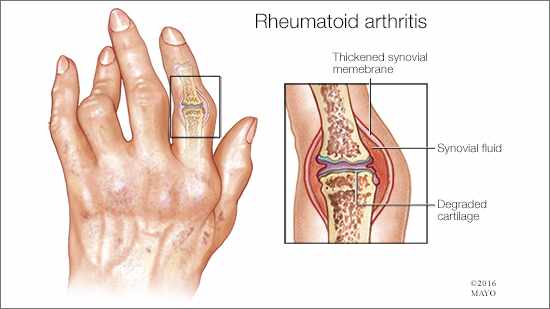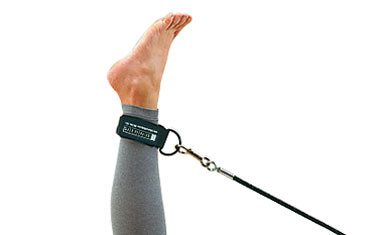Become an Instructor, Injuries and Pregnancy
Instructing Clients with Rheumatoid Arthritis

The two most common known forms of arthritis are Osteoarthritis (OA) and Rheumatoid Arthritis (RA). The two have very different mechanisms in the way that they cause damage to the joints.
While Osteoarthritis is degenerative, Rheumatoid Arthritis is an autoimmune disease. The body essentially attacks itself, leading to pain, swelling and decreased function of the joints. In advanced stages, the joints are so badly affected that they can cause permanent deformities.

As Rheumatoid Arthritis is autoimmune condition, the sufferer experiences other issues that do not have any direct relationship to the joints. Fatigue, and a constant feeling of being ill are also trademark problems of Rheumatoid Arthritis.
Physiological effects of Rheumatoid Arthritis can be generalised into two categories – local joint changes, and other systemic issues.
LOCAL JOINT CHANGES
It is thought that Rheumatoid Arthritis attacks the Synovial Membrane of the joints but why this happens remains a mystery. Attacking the membrane leads to local inflammation and thickening of the membrane – this is significant as the joint capsule needs to be able to move when the joint it is protecting moves. With the thickening and inflammation, joint movement becomes compromised.
As the disease progresses, the autoimmune response then starts to attack the articular cartilage, and also bone. Without the cartilage to protect the bones from rubbing and wearing against each other, the bones not only become damaged from the disease but also just from the fact that they are being used in daily life. The changes at the cartilage and the bone is what can create the bony deformities that is characteristic of Rheumatoid Arthritis.
Joint deformity is the most apparent at the distal sections of the limbs.
SIGNS AND SYMPTOMS
There are few main symptoms that commonly affect the joints –
Swelling: one of the trademark symptoms of Rheumatoid Arthritis is swelling – firstly at the level of the synovium, then at the joint. In advanced stages of Rheumatoid Arthritis, the swelling at the joints is quite evident and can appear puffy.
Stiffness: because of the swelling, joints can be hard to move and have limited range. This may be worse in the morning, when inflammation has accumulated throughout the night.
Pain: damage to the articular cartilage and the bone leads to pain. Bone is a sensitive structure and any damage to it leads to a lot of pain signals being sent to the brain. As muscles weaken from decreased use, joint stability is more dependent on the bones, further creating a damaging loop of pain.
Redness: redness is a byproduct of inflammation. Just like if you were to roll your ankle and it be red and swollen. With Rheumatoid Arthritis, the redness can be consistent.
These signs and symptoms will vary from client to client, and severity can change from day to day. Sufferers of Rheumatoid Arthritis can also go through flare ups and remissions very similar to Multiple Sclerosis.
OTHER SYSTEMIC ISSUES
Other signs and symptoms that aren’t necessarily joint related include:
- Fatigue
- Fever
- Weakness
- Flu-like symptoms
- Changes in skin sensation (tingling and numbing)
- Loss of appetite
IMPLICATIONS FOR PILATES
Although Rheumatoid Arthritis is quite a painful condition, exercise can improve strength levels and range of motion.
TIP #1: EDUCATE CLIENTS ABOUT THE BENEFITS OF LOW IMPACT EXERCISE LIKE PILATES
It is a common recommendation for people with Rheumatoid Arthritis to exercise, but to choose methods which are low impact in regards to the joints, as they are already inflamed and stiff. More impact through the joints can make the condition worse.
Luckily with Pilates, you can take a significant load off the joints. Be aware that Rheumatoid Arthritis can affect all of the joints in the body, so a client may be sensitive to movements that aren’t generally pain-inducing.
TIP #2: ENSURE THAT THERE IS NO PAIN
Always ensure that there is no pain in any of the exercises. If the client experiences pain, discontinue the exercise.
TIP #3: GRIP STRENGTH MAY BE AFFECTED

As Rheumatoid Arthritis can have significant effects on the hands and feet, the most obvious limitation that you will come across is the client’s inability to hold onto the reformer straps strongly. If using small equipment, the client may not be able to grip onto the band or circle. Severe swelling and stiffness can mean that forming a closed fist is sometimes impossible.
When holding onto the reformer straps or small equipment, you may need to teach or show the client how to hold the equipment without gripping it strongly.
If a client still has difficulty gripping reformer straps, wrist or ankle cuffs can be attached to the reformer carabineers.
TIP #4: AVOID WEIGHT BEARING
Treat Rheumatoid Arthritis similar to someone who has shoulder impingement signs. Weight bearing will either have to be kept to minimal or taken out completely. Excessive force through the shoulder joint can further aggravate symptoms. Example exercises to avoid when the hands are affected –
- Tricep Circles (on the mat)
- Plank Series (on the mat)
- Hosekick (on the mat)
- Kneeling Sidekick (on the mat)
Similar to the hands, the toes may have extremely limited range. Avoid exercises that require the toes to bend and extend under load such as –
- Plank Series (on the mat)
- Plank Series (on the reformer)
- Knee Stretches (on the reformer)
- Scooter (on the reformer)
TIP #5: CLIENTS WILL GO THROUGH FLARE UPS AND REMISSIONS
Clients with Rheumatoid Arthritis can go through flare ups with their condition. When this occurs, not only will their physical limitations increase but they will also feel ill – ie have flu-like symptoms and always feel tired. This is not a time to try and challenge the client. Instead of focusing on heavy resistance which can load up the joints, try to focus on moving the joint through a pain free range of movement (avoiding any exercise which causes pain) and stretching.
When a client is in remission from a flare up, focus on working specific body parts instead of working the whole body as a way of managing fatigue. Be aware that clients may still tire quicker than normal, so work within their limitations.
TIP #6: TAKE BREAKS AS NEEDED
Clients with Rheumatoid Arthritis may need more breaks and may tire easily. Always work within their limitations and be guided by how they are feeling.
TIP #7: USE LIGHTER SPRINGS ON THE REFORMER
If instructing reformer classes, you may need to use lighter springs with Rheumatoid Arthritis clients as heavier springs can place too much load on the joint. It is possible to increase spring resistance during periods of remission to help build strength and then reduce springs during flare ups and focus on maintenance instead.
TIP #8: “MOTION IS LOTION”
When a joint doesn’t move, it becomes stiff and more painful. This is true especially when arthritis is present in the body. Moving the joint through a pain free range of movement can help to lubricate the joint and decrease pain, so it can be very helpful for clients with arthritis reduce pain.
This article is intended as a guide for Pilates instructors when taking clients with arthritis. While this blog post refers to injuries, the diagnosis of injuries is beyond the scope of practise for Pilates instructors. When instructing injured clients, you should always liaise directly with their health care practitioner for guidance with regard to exercise limitations. When in doubt, refer your client to a health care practitioner for diagnosis.
REFERENCES
Arthritis.org. (2018). Pilates for Arthritis. [online] Available at: https://www.arthritis.org/living-with-arthritis/exercise/arthritis-friendly/pilates.php [Accessed 14 Nov. 2018].
Balancedbody.com.au. (2018). [online] Available at: http://www.balancedbody.com.au/product-page/adjustable-velcro-ankle-cuffs-pair [Accessed 14 Nov. 2018].
EverydayHealth.com. (2018). The Surprising Ways Pilates Can Ease Rheumatoid Arthritis Symptoms. [online] Available at: https://www.everydayhealth.com/rheumatoid-arthritis/living-with/how-pilates-can-ease-ra-symptoms/ [Accessed 14 Nov. 2018].
Mayo Clinic. (2018). Rheumatoid arthritis – Symptoms and causes. [online] Available at: https://www.mayoclinic.org/diseases-conditions/rheumatoid-arthritis/symptoms-causes/syc-20353648 [Accessed 14 Nov. 2018].
MedPage Today. (2018). Exercise Tied to Anti-inflammatory Effects in Rheumatic Disease. [online] Available at: https://www.medpagetoday.com/resource-center/Advances-in-RA-Management/Anti-inflammatory-Exercise-Effects/a/50361 [Accessed 14 Nov. 2018].
Mendonça, T., Terreri, M., Silva, C., Neto, M., Pinto, R., Natour, J. and Len, C. (2013). Effects of Pilates Exercises on Health-Related Quality of Life in Individuals With Juvenile Idiopathic Arthritis. Archives of Physical Medicine and Rehabilitation, 94(11), pp.2093-2102.